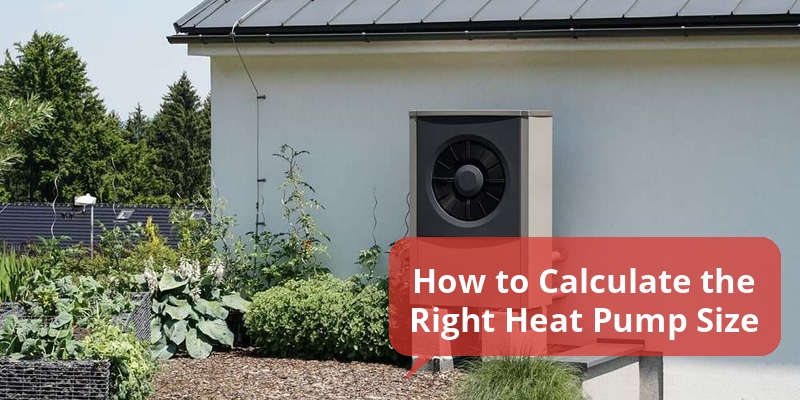Choosing the correct heat pump size is essential for efficient heating and cooling. An undersized heat pump struggles to maintain comfort levels, while an oversized unit wastes energy and drives up costs. Calculating heat pump size accurately ensures optimal performance and energy savings. This guide explains the key factors and methods to determine the ideal heat pump capacity for residential use.
| Factor | Importance | Typical Impact on Size |
|---|---|---|
| Square Footage | Primary sizing parameter | Increases size proportional to home area |
| Insulation & Air Sealing | Determines heat loss/gain | Better insulation reduces size needs |
| Climate Zone | Impacts heating/cooling load | Colder zones require larger units |
| Window Quality & Orientation | Influences solar heat gain/loss | Large, south-facing windows increase size |
| Occupant Behavior | Affects indoor heat load | More occupants can increase required capacity |
Key Factors Influencing Heat Pump Size
Several critical variables determine the appropriate heat pump size:
- House Size and Layout: The total square footage of conditioned space directly impacts capacity requirements. An open floor plan may require different considerations than compartmentalized rooms.
- Insulation Quality: Well-insulated walls, ceilings, and floors retain heat better, decreasing the heating and cooling load.
- Local Climate Conditions: Areas with harsh winters or hot summers demand heat pumps with higher capacity for maintaining comfort.
- Window Type and Exposure: High-performance, double or triple-pane windows reduce heat transfer, affecting sizing calculations.
- Air Leakage: Homes with drafty areas increase load due to heat loss or gain.
- Occupancy and Lifestyle: Number of occupants and activities that produce heat influence the sizing process.
Methods to Calculate Heat Pump Size
Professional sizing commonly uses industry-standard calculations combined with heat load assessments:
Manual J Load Calculation
The Manual J Residential Load Calculation is a widely accepted method to estimate heating and cooling needs. It considers:
- Building materials and insulation values
- Window types and shading
- Local weather data
- Indoor desired temperatures
- Air infiltration rates
This detailed approach provides BTU/hr values that guide selecting the appropriate heat pump capacity. Tools such as software programs or services from HVAC professionals generally perform Manual J calculations.
Rule of Thumb Estimation
While less accurate, quick estimates use general rules such as:
- 20-30 BTU per square foot: Typical range depending on insulation and climate
- For example, a 2,000 sq. ft. home may require between 40,000 and 60,000 BTU/hr
These estimations serve as a starting point but should be verified with detailed assessments.
Load Calculation Table Example
| Climate Zone | BTU per Square Foot | Example 2,000 sq. ft. Home |
|---|---|---|
| Cold (e.g., Minnesota) | 30 | 60,000 BTU/hr |
| Mixed (e.g., New York) | 25 | 50,000 BTU/hr |
| Warm (e.g., Florida) | 20 | 40,000 BTU/hr |
Understanding Heat Pump Capacity Ratings
Heat pump sizes are commonly expressed in BTUs (British Thermal Units) per hour or tons, where 1 ton = 12,000 BTU/hr. Common residential heat pump sizes range from 1.5 tons (18,000 BTU/hr) to 5 tons (60,000 BTU/hr).
Choosing the correct capacity ensures efficient operation without frequent cycling or performance issues.
Additional Considerations for Proper Heat Pump Sizing
- Ductwork Quality and Layout: Properly sized and sealed ductwork supports consistent airflow and system performance.
- System Type: Air-source heat pumps are common, but ground-source (geothermal) systems have different sizing criteria.
- Future Home Modifications: Planned home expansions or insulation improvements should be factored into sizing decisions.
- Professional HVAC Assessment: Engaging a licensed contractor or energy auditor will provide the most precise sizing and equipment recommendations.
Benefits of Proper Heat Pump Sizing
- Energy Efficiency: Right-sized heat pumps reduce energy consumption and utility bills
- Consistent Comfort: Maintains steady indoor temperatures without excessive cycling
- Equipment Longevity: Minimizes wear and tear by avoiding overuse or short cycling
- Environmental Impact: Lowers greenhouse gas emissions by optimizing performance
Common Mistakes to Avoid When Calculating Heat Pump Size
- Relying Solely on Square Footage: Ignoring factors like insulation, windows, and climate can cause incorrect sizing
- Oversizing: Picking a significantly larger unit to “be safe” often results in inefficiency and increased operating costs
- Undersizing: Choosing a unit too small will struggle in extreme temperatures, reducing comfort
- Neglecting Professional Advice: Skipping expert load calculation and installation guidance can lead to poor results
